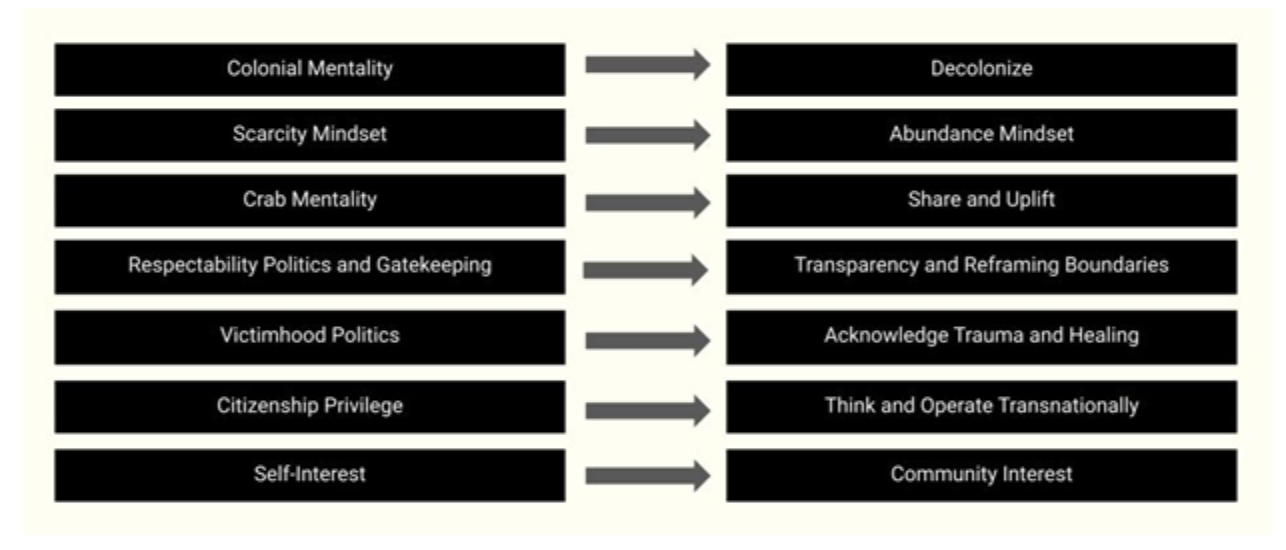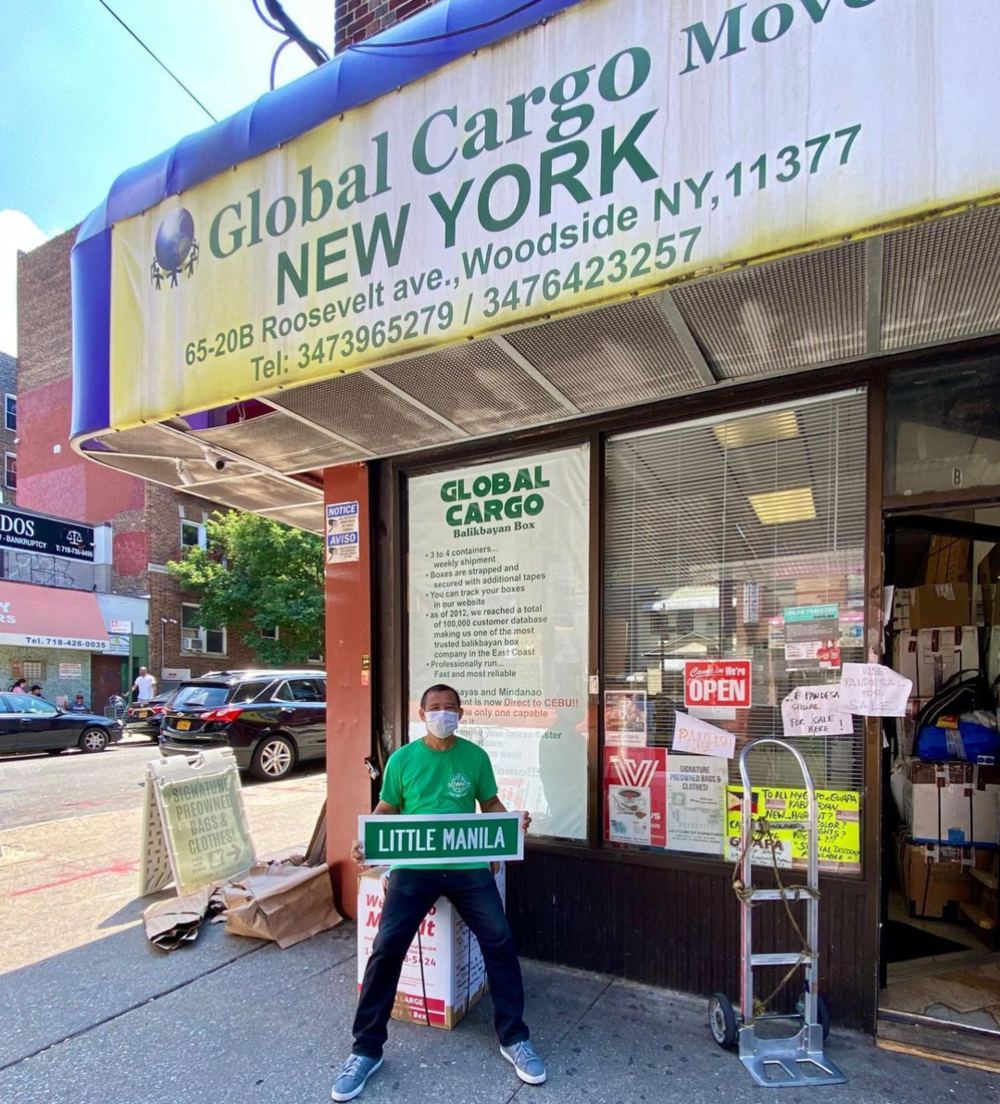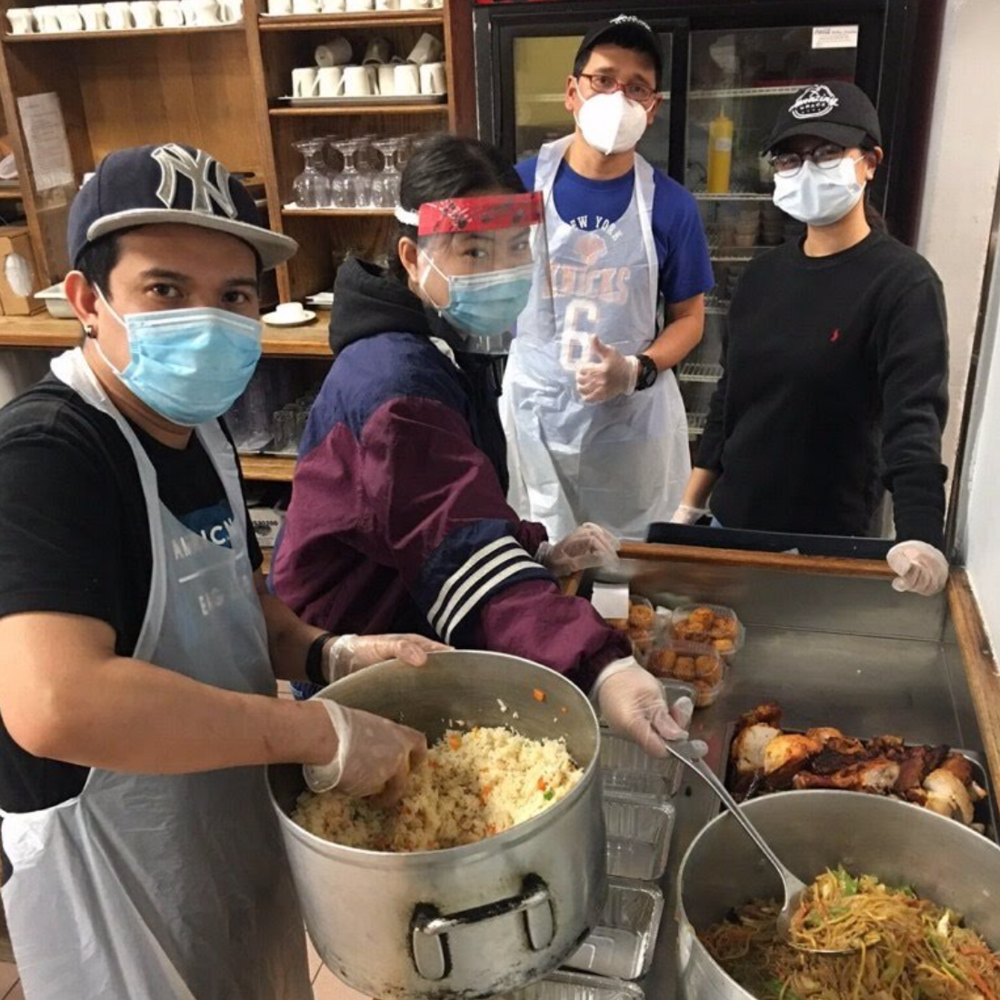LITTLE MANILA
NEW YORK, NY
WE-Making is a suite of resources that explores the relationship between place-based arts practices and social cohesion as a means to advance health equity and community wellbeing. This We-Making story is one example of how place-based arts and cultural strategies uniquely contributed to social cohesion and wellbeing in this community. Throughout this story you’ll see terms paired with actions in parentheses (e.g., social capital, collective action, place attachment, civic engagement, self-determination of shared values). This is to denote for the reader how the WE-Making framework was specifically incorporated. Explore the WE-Making framework and resources.
Image credit: Little Manila Queens Bayanihan Arts
Our work, as social practice artists working under the name Little Manila Queens Bayanihan Arts, came from the fortunate circumstance of having resources and positive relationships with willing activists to support the New York City Filipino community—whom we refer to as “Little Manila”—during the first wave of the COVID-19 pandemic.
This case study will highlight the ways in which place-based arts and cultural strategies enabled trust between community members, subsequently leading to increased social cohesion and community well-being. Though the highlighted works and projects operated independently from the WE-Making framework, the concepts and terms from the framework will be named as an effort to map the efforts and highlight parallel thinking.
First, this report will share historical background of the community, define the epistemologies and theoretical frameworks, and give an overview of key community arts projects. The projects that will be highlighted are: the Meal to Heal mutual aid initiative, the Mabuhay mural, and the successful campaign to install a “Little Manila Avenue” street sign in the community.
The foundation of this work is in Filipino-specific values. Through artistic practice, we aim to to illuminate and honor the uniquely Filipino concept of “bayanihan.” Its root “bayan” speaks to the idea of “home” or “community”—it can mean country, town, public, people. “Bayanihan” refers to a traditional community practice in which family and neighbors help a person move from one place to another by collectively carrying the house to its new location. Nowadays it is a widely used metaphor that conveys mutual aid and resilience in the face of community challenges (collective efficacy- capacity and capability to achieve collective action). In early 2020, the lead artists defined their goals with the overarching objective of instigating positive change in the Little Manila community. These values continue to be revisited an pronounced in written community agreements.


Our work as organizers and artists has been to be in collaboration with the Little Manila community to re-imagine a common narrative about our collective experience as Filipino New Yorkers. This has not only meant reconciling the colonial history between the Philippines and the US, and its residual entanglements, but also bridging the generational divides within the community. This has also meant trying to have honest and difficult conversations about every person’s positionality when they engage in the social practice work (social capital- fostering understanding among community members). Above all, the act of co-creating has been our means of social cohesion and shared sense of belonging and ownership of the NYC Filipino community at large.
We recognize that as Filipinos, our shared experiences are multi-faceted and complicated by trauma, class disparity, tribal differences, and varying degrees of citizenship privilege. Like the Philippines, we are archipelagic. Navigating community while holding both American and Filipino values affords both a double consciousness and more tools as cultural workers. One Filipino value we leverage is “utang na loob.” Essentially, it means a sense of gratitude, indebtedness, and reciprocity. In pursuit of community abundance, we leveraged utang na loob as a regenerative way to build social cohesion and solidarity.
Knowing our shared history and aligning on community values gave us the self-assuredness to lead this work. Our work, as social practice artists working under the name Little Manila Queens Bayanihan Arts, came from the fortunate circumstance of having resources6 and positive relationships with willing activists to support the Little Manila community during the first wave of the COVID-19 pandemic.
Meal to Heal
In 2020, our early instincts anticipated what would be later confirmed in reports more than a year later: that the impact on Filipinos would be disproportionate. To respond to the need in our community, the Meal to Heal Initiative was created in late March and launched in April 2020 as a response to the COVID-19 crisis in New York City. During this time, we coordinated food deliveries between Filipino businesses and healthcare units with Filipino workers to strengthen and bring attention to the unique ecosystem of the local Filipino community. Managing the logistics between different community members provided opportunities to engage in community asset mapping and share knowledge (mindset- connecting people across difference). We held reflection sessions that cemented solidarity amongst the organizers. Through these efforts, we not only sought to feed healthcare workers but to also support the brick-and-mortar businesses that make up Little Manila, the heart of the NYC Filipino community. With every delivery, we deepened our relationships with Philippine businesses and healthcare workers, but also grew friendships with inspiring people who are doing important work (social capital- bridging).

Mabuhay Mural
Despite the absence of data and coverage around our community’s issues and concerns, we created with urgency and conviction, using the tools we had as artists to increase visibility of our community. At a busy intersection of the Little Manila neighborhood, we painted a mural of the Philippine word Mabuhay over the course of several weeks, showing up on sight almost every day. Serving as both a welcome sign and affirmation of survivance, color combinations of sunshine yellow with traces of gold, hues of green growth and the sampaguita (or jasmine) flower flourishing from background of blue, with the prominently-displayed “Mabuhay,” a Philippine expression that has many meanings: cheers, welcome, may you live.
For more than ten years, there had been attempts to have a Philippine mural in the Little Manila neighborhood. This was an effort to finally achieve that goal, and to also enact creative placekeeping to represent the values of the Filipino community. The visual vocabulary is rooted in the history and landscape of the Philippines. The typography is based on lettering found on the iconic jeepneys; the illustration style of the plants is based on Malay batik design from Mindanao, Indonesia, and Malaysia; the gold in the linework is an homage to goldsmith artistry of precolonial Philippines.

Little Manila Avenue
On June 12, 2020, Philippine Independence Day, we unveiled the mural. Attached to the microphone was an imitation street sign that read LITTLE MANILA. This prompted the council member, in attendance, to commit to making the sign official, thus instigating a street co-naming campaign that garnered widespread support within and beyond Little Manila.
Creating the campaign was more of a creative challenge than a logistical one, as no formal history had been written about the local Filipino community. Without a collective, hyperlocal narrative—one that is removed from international or national narratives—it would be difficult to make the case for an official sign from the City of New York. The reflection sessions and oral histories that were collected during the Meal to Heal initiative were imperative to our effort to effectively bring the community’s narrative into the mainstream and deeper into the consciousness of Filipinos from wide-ranging backgrounds (self-determination of shared values- creating ways for people to discuss issues and for connections). Undisbuted amongst most Filipinos is their contributions to care labor and their foundational work as being amidst the immigration wave that created Little Manila. Leveraging this indisputable, collective knowledge was key to mobilizing the community to advocatefor the street sign. On June 12, 2022, we successfully unveiled the street sign.



